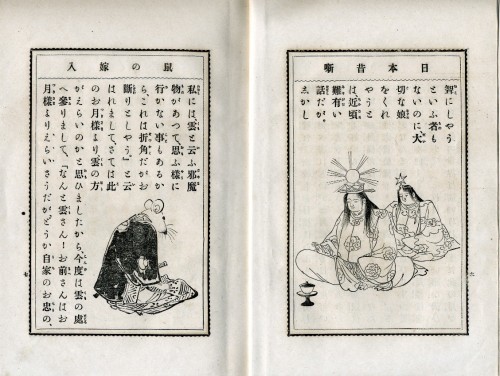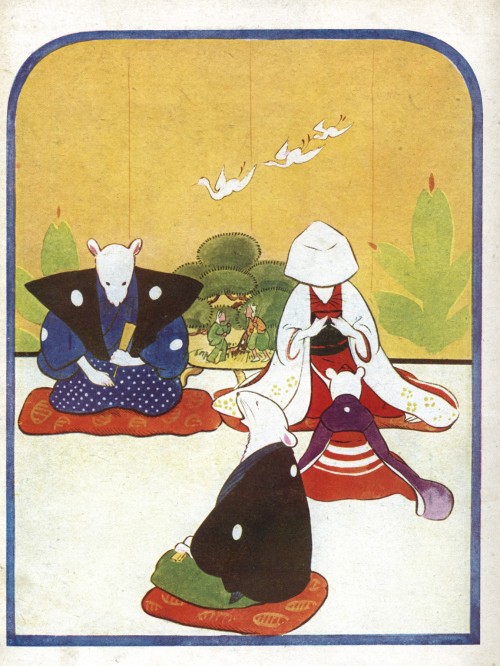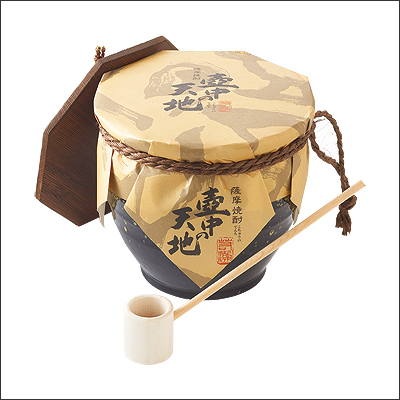
Fujiwara no Kamatari - il nostro eroe
Fujiwara no Kamatari (614-669), il capostipite della potente famiglia Fujiwara, fu onorato della nomina alla carica di Taishokan (anche Daishokukan, significa grande cappello intessuto così) dall’imperatore Tenchi (626 – 671). Kamatari fece una visita al tempio privato di Kasuga e fece voto di costruire una Sala Dorata al tempio Kofukuji di Nara. Egli aveva molte figlie; la più grande, Komiou, era già sposata all’imperatore Shoumu quando l’imperatore cinese Taizong(599 – 649) inviò un emissario imperiale in Giappone per richiedere la mano della seconda figlia, Kouhakunyo, famosa per la sua eccezionale bellezza.

Imperatore cinese Taizong
Kamatari accettò la proposta e mandò la figlia in Cina. Le preparò trecento navi, due delle quali con interni riccamente adornati e prore magnificenti; una con la forma di una testa di dragone, l’altra con la testa di una fenice. L’imperatore Taizong diede il benvenuto a Kohakunyo, insieme ai Ministri della Destra e della Sinistra, svariate donne della corte e un centinaio di ufficiali, la accolsero al porto cinese di Mingzhou e la scortarono al palazzo nella capitale, Chang’an.
Passarono gli anni e Kamatari soddisfò la sua promessa di costruire la Sala Dorata nel Kofukuji, nella quale risiede la statua dorata di Shakyamuni Buddha. L’imperatrice Kohakunyo desiderava mandare al padre un prezioso gioiello da sistemare tra i bianchi capellli sulla fronte del Buddha, così da illuminare l’universo che emana dal suo essere. Guidati dal generale Wanhu, i soldati cinesi partirono per il Giappone con il gioiello. Ma gli Otto Re Dragoni (Hachidai Ryūō) erano in agguato complottando il furto. Innanzitutto mandarono dei guerrieri Asura ad attaccare i soldati, i quali riuscirono coraggiosamente a resistere a numerose battaglie navali. Determinati a rubare il gioiello i re drago mandarono la principessa drogone Koisainyou a sedurre Wanhu da una barca in legno. La sua barca approcciò quella del soldato in prossimità di Sanuki nello Shikoku. Il generale cinese fu rapito dalla bellezza della principessa Koisainyo che con abilità riuscì a fuggire con il gioiello, portandolpo con sè nelle profondità marine, nasconsto nel Palazzo del Drago.
Costernato Kamatari si recò da Fusazaki, a Sanuki, con la speranza di recuperare il dono della figlia. Sistematosi lì, egli sposò una pescatrice di perle, tenendo nascosta la propria identità. Kamatari visse con la donna in una capanna per tre anni e ebbe un figlio con lei. Quando, un giorno, la donna realizzò che suo marito era lo Taishokan si offrì volontariamente di immergersi fino al Palazzo del Drago in cerca del gioiello, il quale era strettamente sorvegliato.
Kamatari escogitò un piano: organizzò una sontuosa celebrazione su una magnifica nave, ingannando i Re Dragoni e facendo loro credere che si trattasse del paradiso buddista della Terra Pura e attirandoli lontano dal loro nascondiglio. Dopo averli allontanati la moglie di Kamatari, legata ad una corda di cinque colori (goshiki no ito*) si tuffò in mare per recuperare il gioiello. Sulla via del ritorno però la donna fu scoperta da una guardia dei draghi. Lottò coraggiosamente ma non avrebbe mai potuto sconfiggerlo. Tuttavia riuscì a non fallire nella sua missione, infatti, quando il suo corpo fu tirato fuori dall’acqua si scoprì che la donna si era aperta il petto con il coltello per nasconderci dentro il gioiello. Grazie al suo atto eroico il gioiello arrivò al tempio e venne posato nella fronte del Buddha Shakyamuni che illuminò il tempio con la sua saggezza.
La scena madre in un set di shōji scorrevoli dipinti in cui i particolari della donna e il drago si perdono nella magnificanza della scena:

Edo Period (1615 - 1868), 1640-80 Coppia di pannelli scorrevoli a sei ante
La prospettiva cambia drasticamente se si dipinge su rotoli destinato ad una lettura più personale, privata.

Rotolo dipinto del periodo Edo attribuito ad Asakura Juuken
vedere anche questo di Utagawa
*The five basic colors are
Green, Yellow, Red, White and Black.
They refer to the five Skandhas (goshiki 五識), the five Wisdoms (gochi 五知) or the five Buddhas (gobutsu 五佛) as an expression of the various Buddhist teachings. In Japan there was the custom during the Heian period to hang a scroll of Buddha Amida Nyorai in front of a dying person, whith a fivecolored string (goshiki no ito 五色の糸) coming from the hand of the Buddha extending to the hands of the person. If you hold it firmly during your last minutes, you were assured a strait passage to the Paradise of the West (Amida Joodo 阿弥陀浄土).
One of the objects in the hand of a Kannon with 1000 Hands (Senju Kannon 千手観音) is a Fivecolored Cloud (goshikiun 五色雲).
The water poured over the head of the statue of Shakyamuni as a child during the festival for his birthday on April 8 (kanbutsu-e潅仏会) is called Five Colored Water (goshikisui 五色水).










